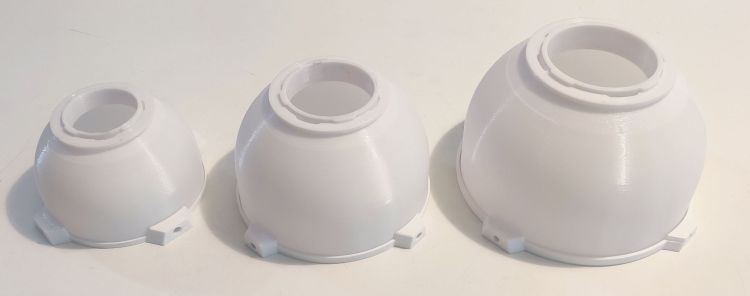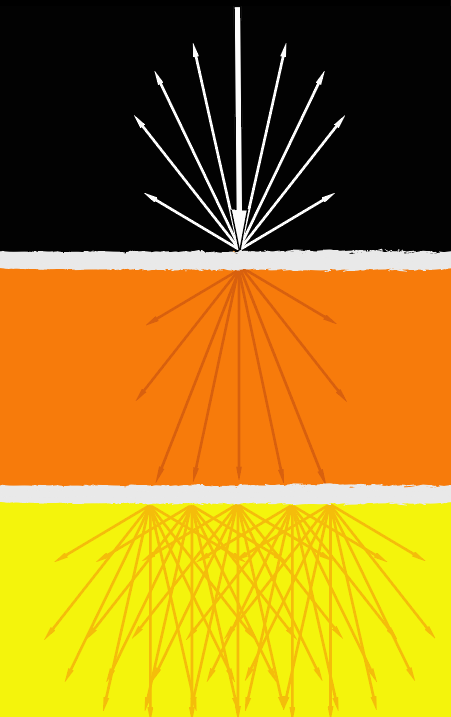There are different types of diffusers, shapes, sizes, practically as many as there are fans of macro-extreme, being an instrument that lends itself to be customized with what you have on hand and according to the skills in DIY.
In this section, I describe a new set of diffuser domes created by OGGLAB and available to purchase at MJKZZ.

The OggLab Domes are produced in three different sizes to cover almost all of the subjects normally shot in macro photography; to adapt to different situations they can be easily used with one or two walls, the latter solution allows the best diffusion of the light source useful with very reflective subjects (like the shiny Coleoptera exoskeleton), the single wall used with relatively low reflective subjects to take advantage of the maximum brightness.

The dome, printed with a 3D printer technology is composed of PETG resin (Polyethylene Terephthalate), which allows optimal light diffusion, has a good transmission, is resistant to UV and high temperatures. The printing was done with FDM (Fused Deposition Modelling) technique; this technology offers the advantage to obtain thin walls (0.6 mm), minimizing the loss of light transmission, and is knurled to obtain a better diffusion of light. The single-wall dome reduces the transmission of light by 30% and with a double wall, by 45%.

An easily removable black sector allows for shading on one side, increasing the relief in relatively flat subjects, or allowing to play with shadows enhancing the effects of the light. The base has four 1/4″ threads in case you want to use it in a non-vertical set-up, using articulated arms.
The height of the three domes varies between 78mm to 97mm to 116mm, with the internal diameter between 92mm to 116mm to 139mm, and the top hole allows easy access to large-diameter lenses (diameter between 47mm to 59 to 71mm, respectively). In case you want to maximize the reflective surface, you can insert a perforated disc of the diameter of the lens you use.

The incident light rays are transmitted through the first semi-matt external layer and are further diffused by the inner wall, which acts as a sort of light source, as simplified in the following drawing.

Due to the position of the light source, I can’t obtain a complete homogeneous light diffusion (like the one obtained with the cylindrical system), but the tests carried out using two spheres as a sample (one in plastic material and one in metal) are encouraging. A third light and orientation of 120° between the sources give better results.

The test is done using two light sources located at about 10cm from the surface of the diffuser.
Using as a subject a small Coleoptera reveals the effectiveness; the following picture was acquired using an inverted Schneider-Componon 50mm/f2.8 lens, while the second below is a detail of the hind leg made using a Mitutoyo 20x lens. The second image turns out to be a little ‘flat’, probably having to play better with the position of the subject, but as a first result, I find it already interesting.

Otiorhynchus sulcatus (Curculionidae, Coleoptera). Mosaic of 2 stacks composed of 60 images each.

Otiorhynchus sulcatus (Curculionidae, Coleoptera) posterior leg with terminal hooks, and the characteristic setae. Image acquired with a Mitutoyo 20x, stack composed of 219 images. Acquisition time 1/3″, with step of 2µm between each photo.
Happy stacking!